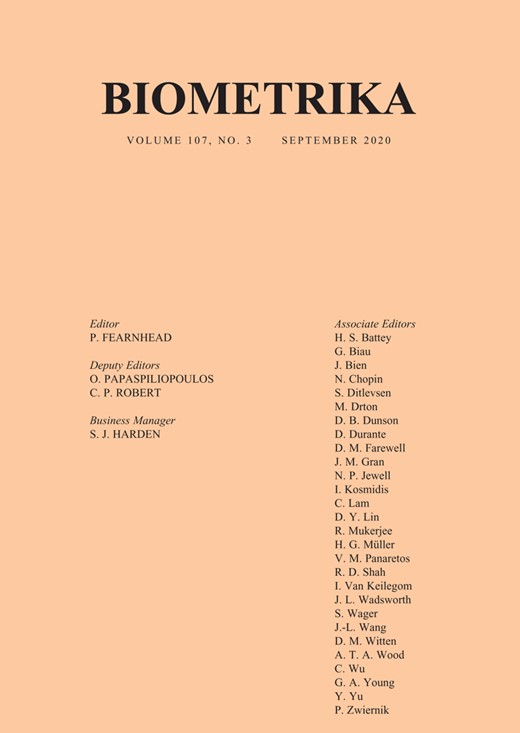-
Views
-
Cite
Cite
Xia Cui, Runze Li, Guangren Yang, Wang Zhou, Empirical likelihood test for a large-dimensional mean vector, Biometrika, Volume 107, Issue 3, September 2020, Pages 591–607, https://doi.org/10.1093/biomet/asaa005
Close - Share Icon Share
Summary
This paper is concerned with empirical likelihood inference on the population mean when the dimension |$p$| and the sample size |$n$| satisfy |$p/n\rightarrow c\in [1,\infty)$|. As shown in Tsao (2004), the empirical likelihood method fails with high probability when |$p/n>1/2$| because the convex hull of the |$n$| observations in |$\mathbb{R}^p$| becomes too small to cover the true mean value. Moreover, when |$p> n$|, the sample covariance matrix becomes singular, and this results in the breakdown of the first sandwich approximation for the log empirical likelihood ratio. To deal with these two challenges, we propose a new strategy of adding two artificial data points to the observed data. We establish the asymptotic normality of the proposed empirical likelihood ratio test. The proposed test statistic does not involve the inverse of the sample covariance matrix. Furthermore, its form is explicit, so the test can easily be carried out with low computational cost. Our numerical comparison shows that the proposed test outperforms some existing tests for high-dimensional mean vectors in terms of power. We also illustrate the proposed procedure with an empirical analysis of stock data.



